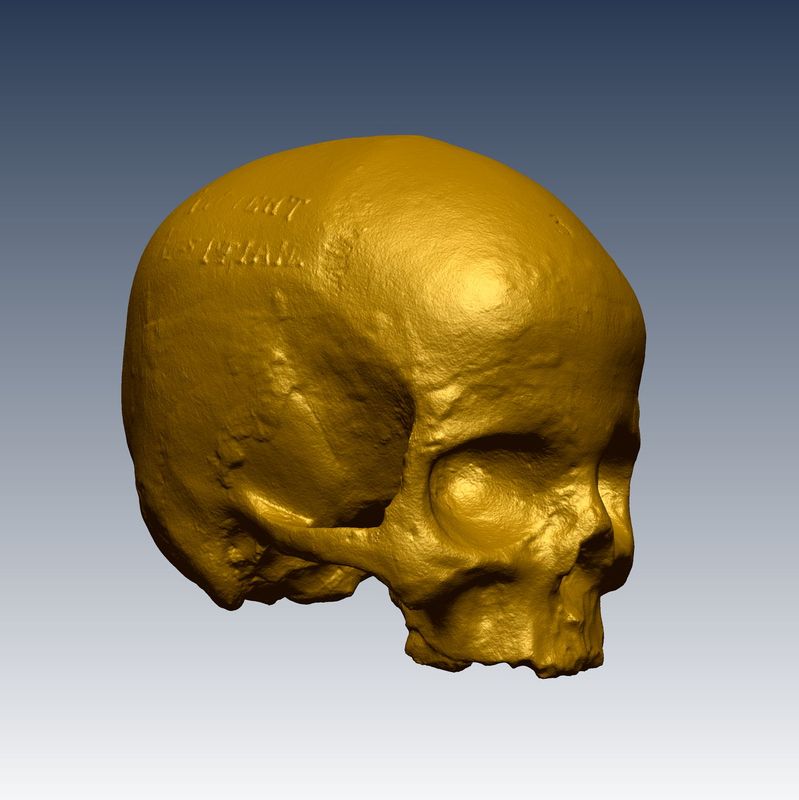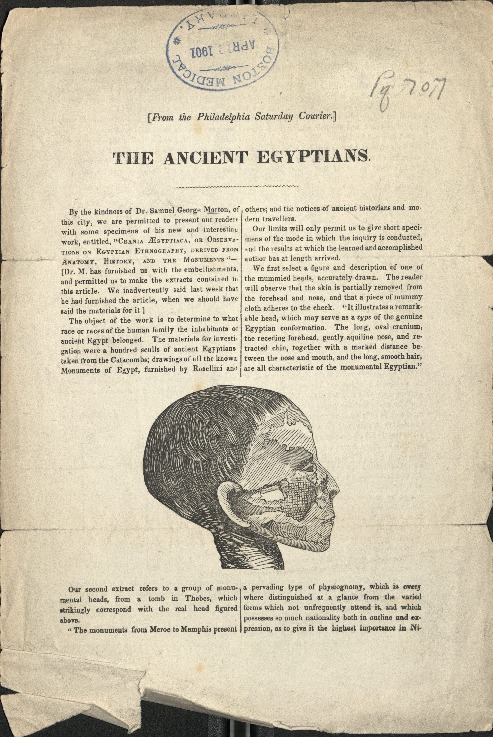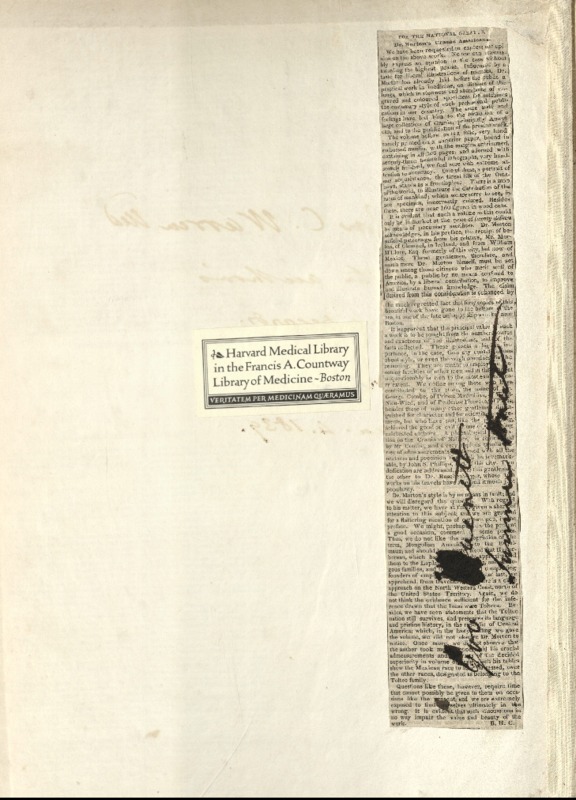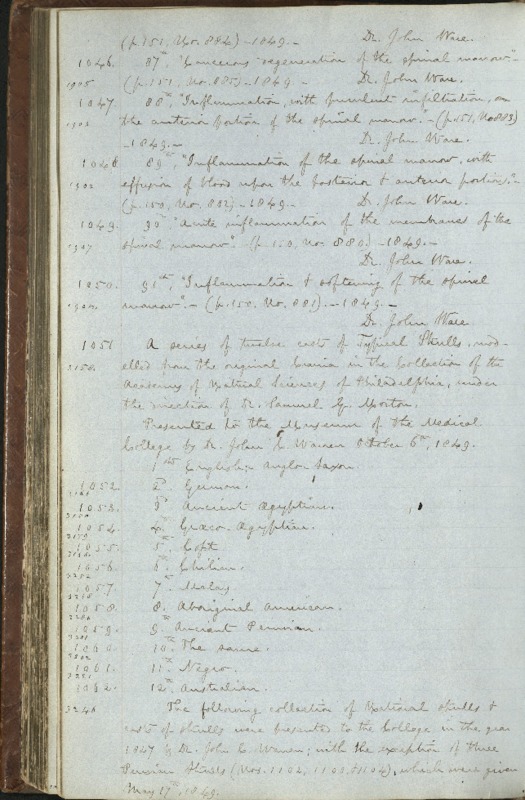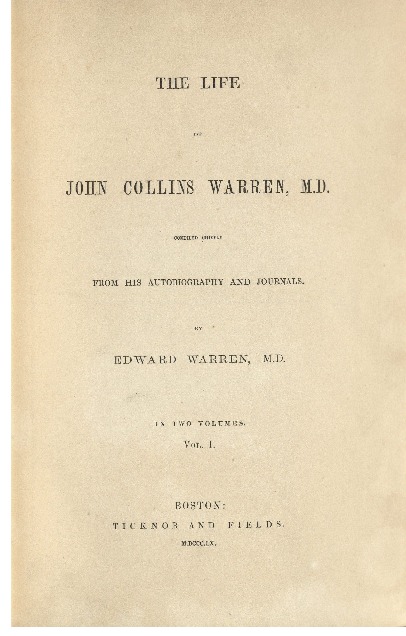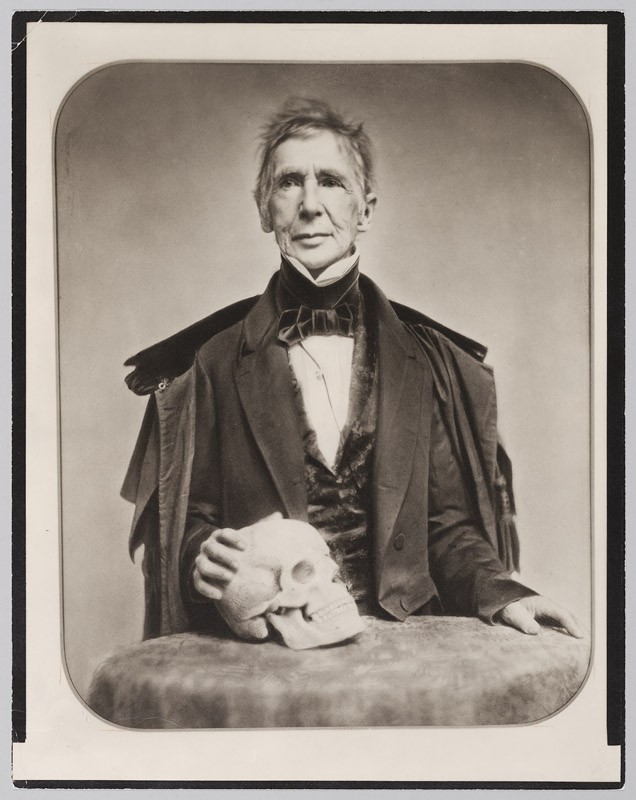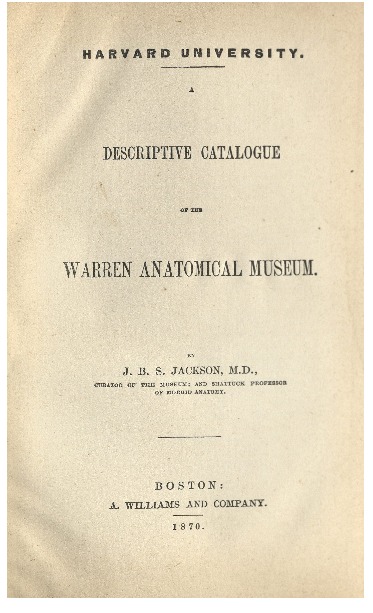The Case of an Ancient Egyptian Skull, Collected by Samuel G. Morton (1799-1851)
An Ancient Egyptian Skull Collected by Samuel G. Morton 3D STL Software Image
This is a screenshot from the Still (STL) 3D image software rendering of an Ancient Egyptian skull collected by pioneering American scientific rascist Samuel G. Morton. This is one of twelve skulls deemed "typical skulls" by Morton for benchmarking his system of racialized skull classficiiation. These twelve skulls were made into plaster casts and donated to the Warren Anatomical Museum in 1848. The screenshot captures the finalized 3D animation of the Ancient Egyptian's skull. The finalized 3D animation was sent off to create 3D prints with PLA plastic. The 3D prints can be found in the Beyond the Bone Box educational kits curated by Warren Anatomical Museum.
The Ancient Egyptians
A pamphlet based on the findings of Morton's, "Crania Ӕgypticaca, or Observations on Egyptian Ethnography, Derived from Anatomy, History, and the Monuments." Determination on the race or races of Ancient Egyptians were drawn from one hundred excavated skulls from Catacombs. Morton draws fifteen conclusions based on his research.
Observations on the size of the brain in various races and families of man
A four page pamphlet by Samuel George Morton from the October 1849 Proceedings of the Academy of Natural Sciences. Morton determined a "relative size of the brain in various races" based on the internal measurement of 623 human crania through cubic inches. A table is provided with his findings; however, he leaves out the measurements of "children, idiots and mixed races." Morton notes other aspects where his sample size lacks representation of particular groups.
Crania Americana,; or, a comprative view of the skulls of various aborigional nations of North and South America. To which is prefixed as eassy on the varieteies of the human species.
This is the collective comparative study of Morton's initial conclusion on variances between different races. Morton believed there were five races: Caucasian, Mongolian, Malay, American, and Ethiopian. The back of the book contains an appendix written by phrenologist, George Combe. Additionally, plate drawings of the crania can be found in the back of book. The copy of the book had been a gift from Morton himself. On the first preliminary page is the inscription "To John C. Warren Md. with the author's Sincere regards. Philadelphia Jan. 4. 1839."
Entry on the Egyptian skull in A Descriptive Catalogue of the Warren Anatomical Museum
This is the intake record of John Collins Warren's donation of the original twelve Morton casts to the Warren Anatomical Museum. It draws specific attention to the fact that Morton selected them for Warren as examples of "Typical Skulls." They were chosen to represent an entire race or geographic location from the crania collection curated by Morton.
The Life of John Collins Warren, M.D.: Comp. Chiefly from his Autobiography and Journals, Vol 1.
Edward Warren wrote two volumes about John Collins Warren I. The books gather J. C. Warren's Domestic and European journals, Letters from Europe, "Biographical Notes," and "Surgical Notes." The first volume has an entry dated December 3, 1838, with the statement that Samuel George Morton offered to give a copy of Crania Americana to Warren. This copy is held in the WAM collection.
The Life of John Collins Warren, M.D.: Comp. Chiefly from his Autobiography and Journals, Vol 2.
Edward Warren wrote two volumes about John Collins Warren I. The books gather J. C. Warren's Domestic and European journals, Letters from Europe, "Biographical Notes," and "Surgical Notes." The second volume has an entry dated March 3, 1853, where Warren discusses the potential purchase of Morton's crania collection after his death. Dr. Kneeland is sent to Philadelphia with $2,000 from a Mr. Barnard - both members of the Boston Society of Natural History. At this point, there had been uncertainty with where the Morton crania collection would be located. The curator, Joseph Leidy, at the Academy of Natural Sciences (ANSP) declined the responsibility of the 918 crania collected by Morton. Simultaneously, men considered "Subscribers of Dr. Morton's Anatomical Collection" and associated to ANSP raised money for the procurement of the collection.
Catalogue of human crania, in the collection of the Academy of natural sciences of Philadelphia: based upon the third edition of Dr. Morton’s “Catalogue of skulls”
James Aitken Meigs was the curator at Academy of Natural Sciences (ANSP). Meigs was responsible for the care of Morton's crania collection after citizens of Philadelphia raised enough funds to keep the Mortonian collection in the city. He conducted his own research on the collection and publish an updated version of the catalog previously created by Morton. An explanatory note in the beginning of the catalog explains how the collection was able to remain part of ANSP through the generous monetary donation from forty-two men.
John Collins Warren, MD. Professor of Anatomy, ca. 1848
A daguerreotype of John Collins Warren circa 1848 when he was about seventy years old. This image would have been taken before Warren offered to purchase the Morton crania collection in 1853. Warren and Morton both owned their own crania collections. Comparisons and notes on variations of skulls were sent between one another. Morton presented casts that he claimed were representational of "typical skulls" to Warren which were later added into the Warren Anatomical collection.
Correspondence J. C. Warren to J. B. S. Jackson about "typical skulls"
John Collins Warren writes to Warren Anatomical Museum curator J. B. S. Jackson about his donation of twelve cast skulls made from the Morton crania collection at the Academy of Natural Sciences in Philadelphia. Warren describes these casts as "typical skulls." Warren states that his donation to the Medical College "will be useful in explaining the peculiarities of form in the difference races." In addition, a catalog is donated alongside the skull casts. On the back of the letter is an annotation, "3158 etc. Typical skulls" which represents the museum catalog numbers in the Warren Anatomical Collection. These were the original museum catalog numbers before they were recataloged following the 1870 publication of the Descriptive Catalogue.
Portrait of Samuel George Morton (1799-1851), undated
A undated portrait of Samuel George Morton with a signature of his name below.
An Entry for the "Typical Skulls" in the Warren Anatomical Museum Index
The entry list the donation of twelve casts considered "typical skulls" from John Collins Warren to the Warren Anatomical Museum. These casts came from the skulls of Samuel George Morton's crania collection which were used to determine a standard measurement process with John Collins Warren. The curator, J. B. S. Jackson, lists the casts under the "National Skulls" division in the Museum Index.
Entry on the Egyptian skull in Descriptive Catalague of the Warren Anatomical Museum
This text is the official published catalogue of the Warren Anatomical Museum. The skull cast is listed in the "Third Division" of the 1870 catalogue, which is entitled "Miscellany." The catalogue's first division is entitled "Healthy" anatomy and it's second division is "morbid" or diseased anatomy. Miscellany is broken up into four series. The cast is in "Series XLI" or "National Skulls." The other three series in Miscellany are "Zoology," "Mementos," and "Phrenology." Division Three is the smallest of the three divisions, equaling 478 out of the 3681 cases (13% of the 1870 total). Series XLI is a mix of human crania and skull casts of various racial identities and ethnicities within different geographic locations. A significant number of the casts were relocated from the Boston Phrenological Society collection. The term "National Skulls" or "Nationals" is consistent throughout 19th century Boston specimen collecting. The Phrenological Society uses it in their 1835 catalogue. The Boston Society for Medical Improvement uses it in their 1848 catalogue. Individual 3180 is listed as an "Ancient Egyptian skull. Cast ; from Dr. Morton. 1849." The donor, John Collins Warren, also donated the majority of the museum's "National Skulls" collection. Pages 706 and 707 print a chart that compares the cast craniometrics with others skulls in the collection. In this analysis special attention is paid to the Occipital Region or the lower back of the Morton casts. These casts were given to represent "typical skulls," and Harvard comparative anatomist and racialized crania collector Jeffries Wyman placed great importance on the occipital region for such individuals. Warren created a methodology to acquire the measurement. Morton and Wyman were invested in such measurements in their own collections, and such measurements in general formed the cornerstone of the prejudicial racialized skull investigations of the 19th century. The order of the crania in the chart is by museum catalog number.


